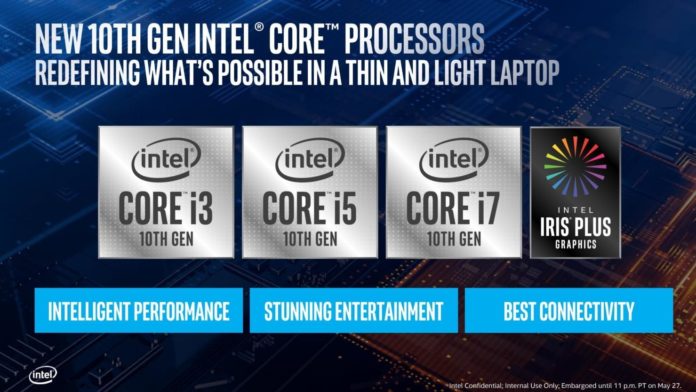Okay, so this is post is going to include details about almost every Intel CPU architecture slated for launch in the coming two to three years, so I’ll divide it into parts, by the node on which they’ll be fabricated. Comet Lake, Cooper Lake first, followed by Ice Lake, Tiger Lake, Sapphire Rapids and lastly, Alder Lake, Granite Rapids,
14nm: Comet Lake, Cooper Lake
Comet Lake. Another 14nm lineup and a possible Coffee lake ripoff without any significant changes. From what we know, Comet Lake will not be limited to mobile devices, and will mainly have two variants, namely Comet Lake-U and Comet lake-S. The former is for notebooks and low-power mobile devices, and the latter will come to the desktop market.

The S lineup will succeed Coffee Lake R, although other than the extra cores, there’s not a whole lot of difference. They might have hardware level mitigations for some of the many flaws that Intel processors suffer from but that’s about it.
Comet Lake-U will succeed Whiskey Lake and come in three versions: V0, S0, and K0. V0 is said to be identical to its predecessor with hardware level vulnerability measures for V2/V3/V4/L1TF/MFBDS/

Cooper Lake, on the other hand, will be limited to the enthusiast Core X and server platforms. You’ll be seeing the Core i7-xxxxX and i9-xxxxX based on CL and the server Xeon parts namely the Xeon Bronze, Xeon Silver, Xeon Gold, and Xeon Platinum lineups. Like CML, expect hardware mitigations for some of the more pressing vulnerabilities.
10nm: Ice Lake, Tiger Lake, Sapphire Rapids
Ice Lake has been one of Intel’s most debated future architectures, with the company claiming it to the most significant upgrade since 2015’s Skylake. The highlight will be team blue’s new 10nm process and the Sunny Cove core which is reportedly going to have an 18% higher IPC compared to

There are three Ice Lake lineups that we know of: U, S, H and the SP Xeons. The ICL-U processors have already started shipping and we should see laptops featuring them in the coming months. Early benchmarks have confirmed that they will be competitive against AMD’s Zen 2 chips. As for the desktop S and mobile H products, no date has been decided probably due to the poor yields and we’ll have to see how they pan out.
The Xeon SP server processors are slated for launch in early 2020, and although they’ll have a higher IPC and increased core count, the clocks will be quite conservative due to the 10nm process being immature.
After

Tiger Lake will feature the Willow Cove cores with most vulnerabilities taken care of and a new cache sub-system. It’ll be based on the 10nm+ node and come to mainstream desktops, laptops, and mobile platforms. Other than that, we’ll also see the Gen12 (Xe) graphics integrated with these CPUs.
Lastly, Sapphire Rapids will be the server and enthusiast extension of Willow Cove featuring the Core X and the Xeon lineups. It’ll also have the PCIe 5 standard and support for DDR5 memory, along with possible integration of Intel’s custom CXL interface.
7nm: Alder lake, Granite Rapids and Meteor Lake
Granite Rapids will be the successor to Sapphire Rapids in the server and enthusiast space and will debut Intel’s 7nm process along with the Golden Cove cores. We can expect a significant performance uplift this cycle as it’ll be a major architectural upgrade.

Alongside GR, we’ll see Alder Lake CPUs for the mainstream desktop and notebook market. However unlike the former, AL will be based on the 10nm node, and most likely feature the Willow Cove cores. We’ll see the Golden Cove architecture along with the 7nm process in the consumer market in 2022 with the introduction of Meteor Lake CPUs. This is the furthest known Intel lineup we know of.
PS: I’ve left out certain parts like Rocket Lake (14nm) as they don’t really bring something new to the table.
Further Reading:
- Chinese Zhaoxin CPU as Fast as AMD Ryzen 7 2700U in Geekbench MC Test
- Chinese x86 Zhaoxin KX-6000 CPU on Par with Intel’s Core i5-7400
Sources:



Thanks for the article. Question about Ice Lake-H: Have you seen any mention / evidence of the Ice Lake H-Series anywhere in the leaks? I’ve read rumors & leaks that Intel may skip the 10nm architecture altogether for the H-Series, so no Ice Lake-H, Tiger Lake-H, or Alder Lake-H.
Apparently since the 10nm clock speeds aren’t high enough for the high-end H CPUs, Intel may go for the following roadmap:
– H1 2020: Comet Lake-H (14nm) [10th Gen]
– H1 2021: Rocket Lake-H (14nm) [11th Gen]
– H1 2022: Meteor Lake-H (7nm) [12th Gen]